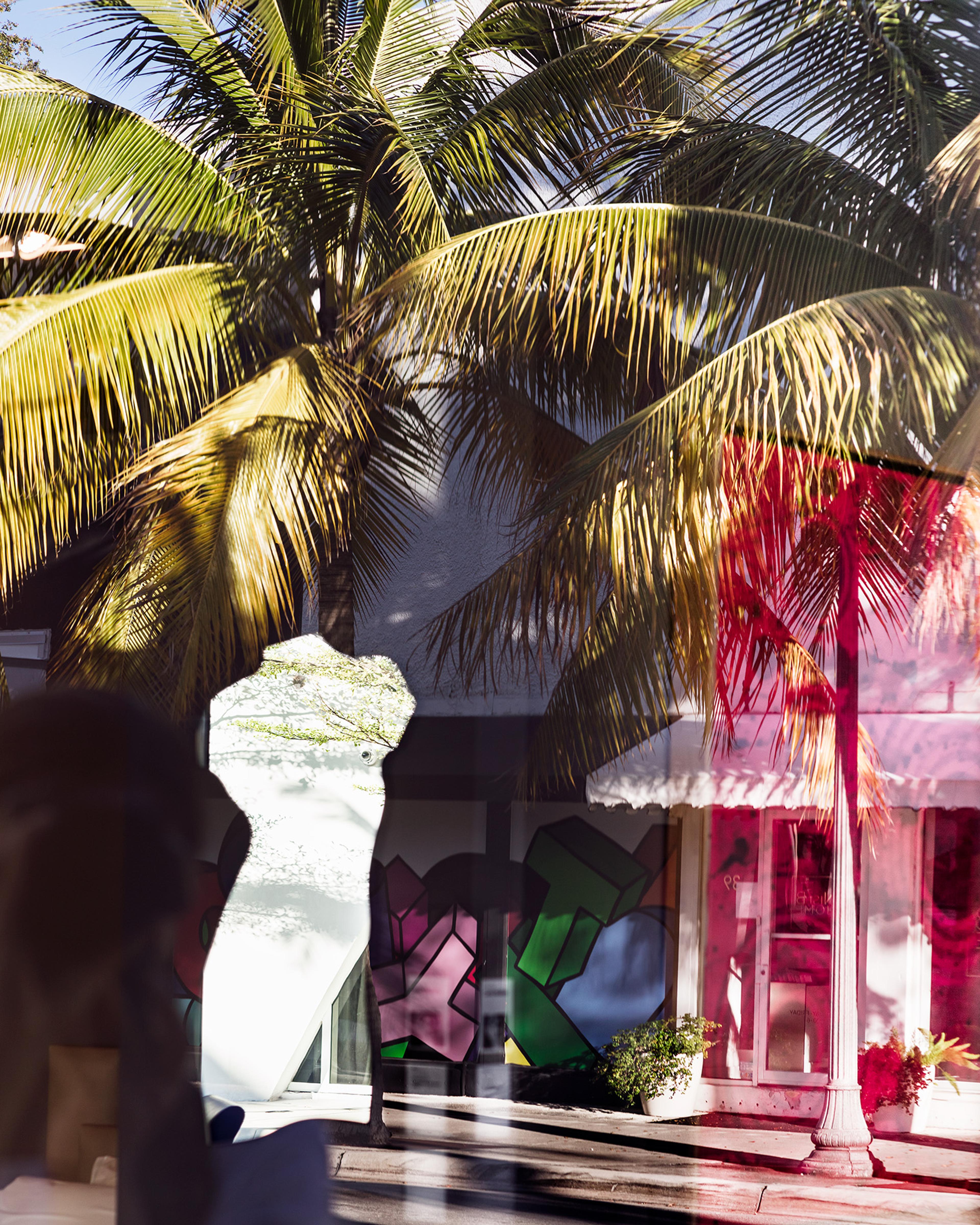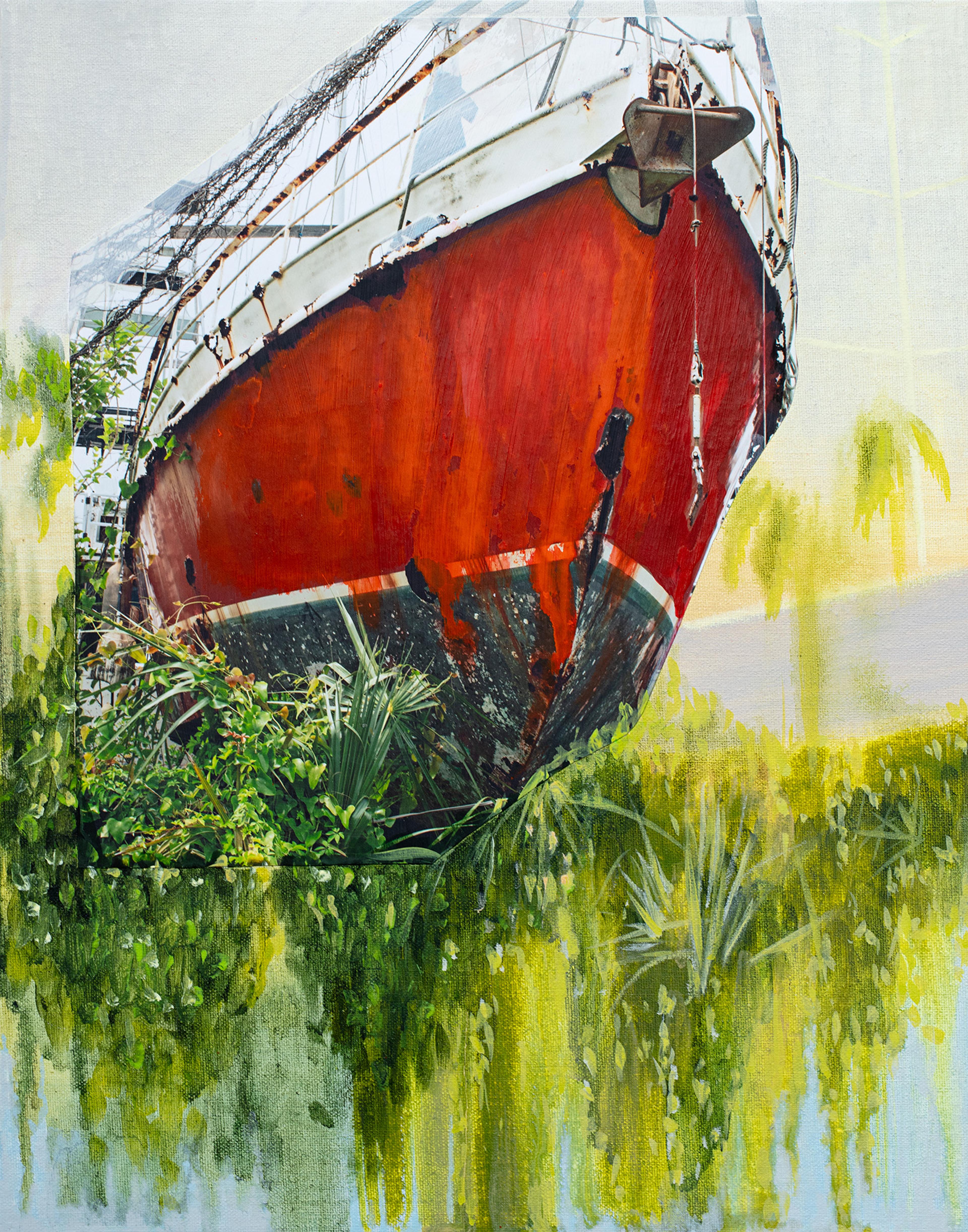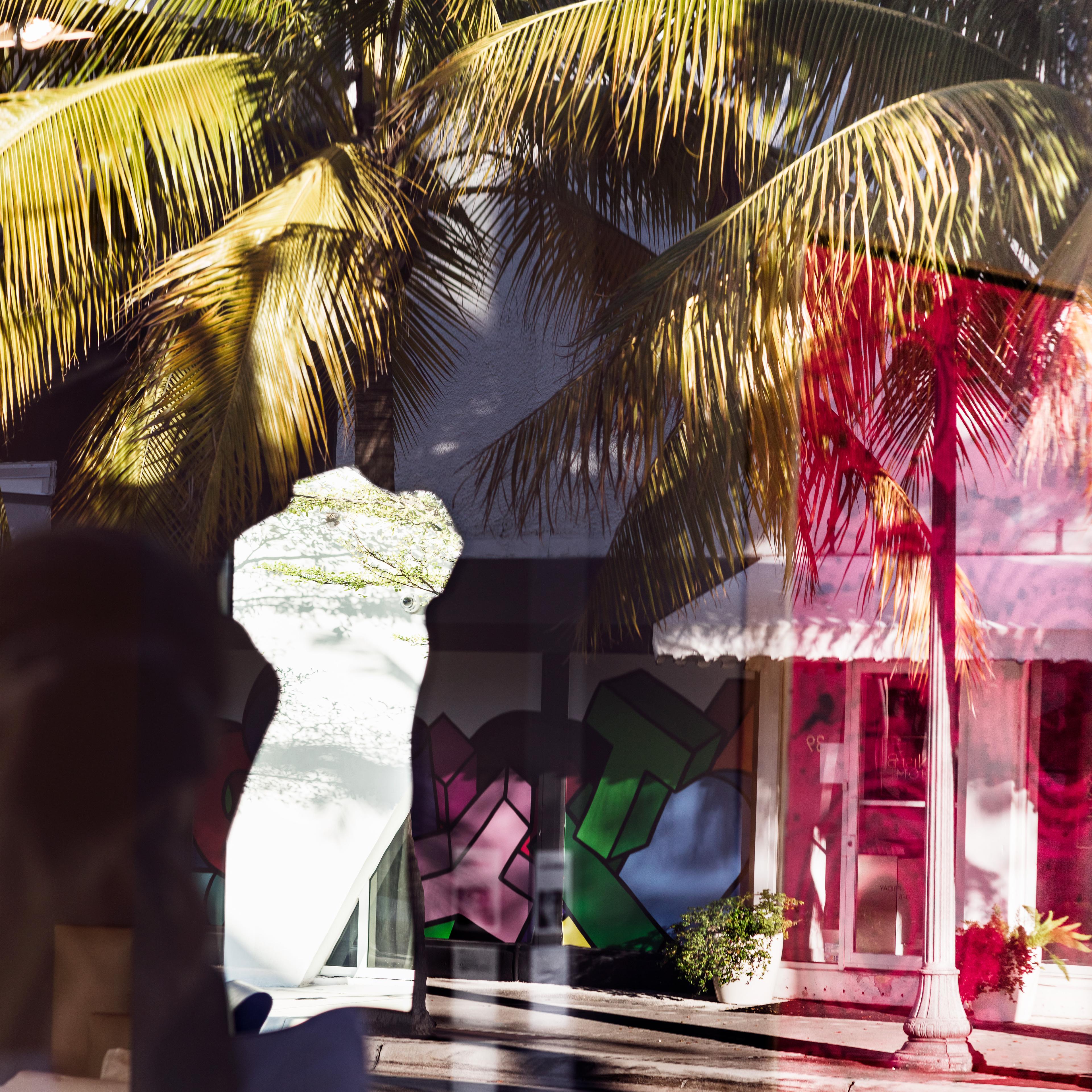Trompe l’oeil—trick of the eye—is not so much an art history term as it is an evolutionary adaptation. We find it in the tiger’s stripes, the orchid’s insectoid face. Nature, apparently, is as self-conscious about appearances as we are, and uses mirroring, as we do, to attract and to camouflage.
Water was our first mirror—the Greek myth of Narcissus tells us so, and even Eve—Milton’s Eve—first sees herself in a pool in Eden. In Florida, water comes from above and below, west and east. Water tucks its trick mirrors in the unlikeliest corners of the built environment, and in an act of biological mimesis, we erect our mirrored glass in the unlikeliest swamps.

Anastasia Samoylova (American, born Russia, 1984). Venus Mirror, Miami, 2020. Inkjet print, 40 × 32 in. (101.6 × 81.3 cm). The Metropolitan Museum of Art, New York, Purchase, Vital Projects Fund Inc. Gift, through Joyce and Robert Menschel, and Alfred Stieglitz Society Gifts, (2024.327.1–.291)
Anastasia Samoylova’s images capture the trompe l’oeil of Florida, many to do with water and glass—the mise-en-abyme of cypress trunks reflected in a tannic creek, the indoor pool of a flooded ground floor, the inverted rubric of a passing flamingo in a pond. Venus Mirror, Miami (2020)—a definitive statement of Floridian aesthetics—was photographed through the highly reflective plate glass of a shop window. It flattens a three-dimensional space into a collage of palm frond and pilaster, mannequin and mural, awning and wave, inside and outside, reflection and shadow.
I spent a lot of time studying certain works Samoylova described as “inkjet and acrylic paint.” I thought I could discern the border where the printer ink merged with the artist’s brushwork. But the two were too finely imbricated, and my eye was thoroughly fooled. Machine photographs and freehand drawings are doubles for each other.

Anastasia Samoylova (American, born Russia, 1984). Red Boat, St Augustine, 2024. Inkjet print, 14 × 11 in. (35.6 × 27.9 cm). © Anastasia Samoylova
My poem, “Kayak,” is an homage to Samoylova’s and Florida’s mirror images. Because the word kayak is a palindrome, and its image in the water is an image of its own capsizement, it provides the perfect metonym for the mirror-world of our terraqueous state. The poem is a double sonnet with palindromic rhymes—the first and last lines rhyme, with subsequent rhyme-pairs closing in on a couplet in the middle, across a stanza break. It starts with a reference to the myth of Alcyone and Ceyx, the couple who were turned into kingfishers that nest on the water during the “halcyon days,” a respite from rough weather seven days before and seven days after the winter solstice. It ends with a reference to Pericles, the Shakespeare play most indebted to the sea. As Mary McCarthy wrote in her essay on Nabokov’s Pale Fire:
Appearance and ‘reality’ are interchangeable; all appearance, however deceptive, is real. Indeed it is just this faculty of deceptiveness (natural mimicry, trompe l’oeil, imposture), this power of imitation, that provides the key to Nature’s cipher. Nature has the ‘artistic temperament;’ the galaxies, if scanned, will be an iambic line.[1]
"Kayak" by Ange Mlinko

Kayak
It’s seven days before the solstice, and alongside crèches,
another myth, of pelagic birds nesting on calm seas
for a two-week hiatus—starting now—resurfaces.
Well, here it’s silver effluent, chowder skies;
the moon mines itself from shadow as we speak.
We’re a tandem, making with double-dipping oars
a little rain. Leaning back, waders lift wings
as if shaking out oversized pages of newsprint.
(They do read the fine print of their environment.)
Oysters picked open cemented to mangroves like ears emerge
sans pearls. A ladder at a boat launch redoubles,
seeming to descend as rungs for soldiers, or souls,
sinking back into the waters, or wars—for we know
this bay was dynamited into existence a century ago.
A mangrove’s roots go down as far as branches grow
into the sky—that is, about twenty-five feet. So
they’re palindromes, feigning parts for wholes.
Sargasso weed toils ashore … red tide bubbles …
the holly and the ivy of a seasonal scourge.
The halcyon myth is a hinged mirror, bent.
A moon whetted on the bay like phantom flint.
Conceiving upon the sea our best imaginings,
we read its returning tide as prophecy, perforce
a rudimentary nib in every diving beak.
The seabirds scan lines faithfully as lullabies
proved upon the pulse of watch faces,
or chanteys from tall ships out of Pericles.
Soon men will burn the seaweed on the beaches.
Notes
[1] McCarthy, “A Bolt from the Blue,” from Pale Fire, Penguin Classics, 1962
